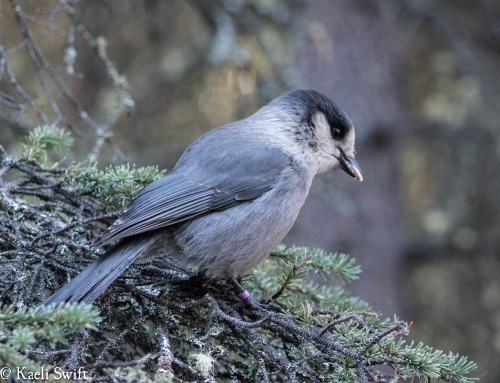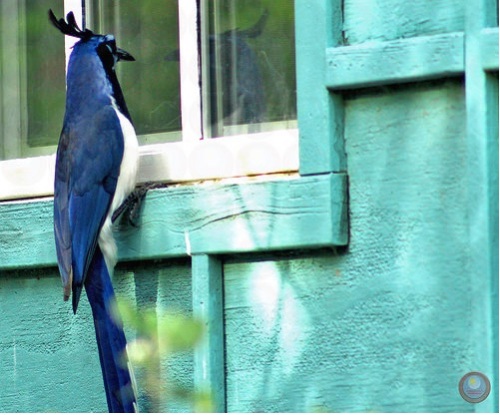Look, I’m a reasonable person. I know what you’re thinking.
“Literally never has it occurred to me I might know too little about jay spit.”
But here’s the thing: it’s actually super interesting and you really can’t understand Canada jays without knowing about their saliva. It would be like trying to understand the internet without cat videos-you just can’t do it. So trust me when I tell you this is the information you didn’t know you needed.

In the early 1960’s Walter Brock was examining Canada jay corpses when he discovered that they have massive salivary glands on par with the ones found in woodpeckers.1 Such generously sized glands are found in no other songbird. Furthermore, like the woodpeckers, it’s not just that Canada jays make a lot of saliva, but they make a lot of sticky saliva. At the time this discovery was made, it was already known that the enlarged glands of woodpeckers served to allow for a foraging tactic called “tongue probing” where, like anteaters, the birds use their long sticky tongues to extract food from narrow crevices. Although Canada jays don’t have especially long tongues, the ability to tongue probe seemed the most parsimonious explanation for this strange adaptation, and Brock suggested that this strategy may actually be the key to the jays’ winter survival. A study a few years later examining their foraging behavior revealed that they don’t feed in this manner, however. They feed more or less the same way the other corvids do.2 It seems instead, that it’s what they do with the food after that’s different.

Rather than using their copious amounts of weird, sticky spit for acquiring food, it’s used for depositing it. If you watch a jay closely after it’s got a bit of food you’ll notice it seems to have missed Emily Post’s memo about chewing with your mouth closed. Over the course of a few seconds you’ll see the food peek out from the bill as the bird moves it around inside its mouth.

This jay picked up this bit of food about 60sec before this photo was taken. Now it’s working it around with its tongue, coating it in sticky saliva.
Here’s where it all really comes together though. If you’ve seen me write about Canada jays before you’ll have noticed that it’s almost inevitable that I’ll use the phrase “Cute little faces” at some point to describe them. But have you ever wondered why? Why do they have such cute little faces? While jays do feed more or less in the same way as other corvids the one exception is that they don’t hammer at objects. If you’re ever given a crow or a Steller’s an unshelled peanut you’ll know exactly the motion I mean. Without the need the hammer objects, or dig holes for burying food, Canada jays don’t need the heavy bills their cousins do.2 Instead they have the blunt little bill that helps give them their characteristic baby-faced look. So not only is their spit responsible for their ability to tough it out in some of the harshest winter environments this continent offers, but it also means they get to look super cute while doing it.
So like I said, you don’t really know Canada jays until you know a thing or two about their spit.

Literature cited
- Brock WJ. (1961). Salivary glands in the gray jay (Perisoreus). The Auk 78: 355-365
- Dow DD. (1965). The role of saliva i food storage by the gray jay. The Auk 82: 139-154



















